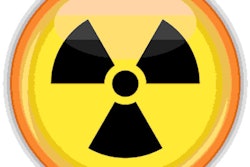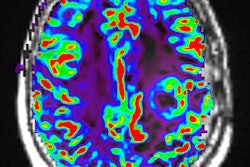
A cancer center in Hamilton, Ontario, has suspended brachytherapy treatment for cervical cancer patients after discovering that guide tubes of the wrong length were being used, meaning radiation may have missed the tumor target. The episode highlights the importance of anonymous error reporting, according to experts.
The Juravinski Cancer Center discovered the error after an inspection of another piece of equipment in late November revealed that brachytherapy treatments in 2017 and 2018 used guide tubes that were not the right length. The center has implemented a system review, and a total of 25 patients who received brachytherapy have been identified and notified.
The system error was reported anonymously, a fact that highlights the importance of anonymity in medical error reporting, according to Curtis Caldwell, PhD, chief scientist at the Radiation Safety Institute of Canada in Toronto.
"If you did not make the [reporting] system anonymous, it would be much more difficult for individuals to report [such incidents]," Caldwell said.
Patients treated at Juravinski Cancer Center will undergo tests and continue to be followed with CT and potentially MRI and/or PET to assist staff in assessing how well their cancers have been controlled. Continued monitoring also will help to reveal if there have been any side effects as a result of the radiation that was delivered to tissues other than the targeted area, according to Dr. Ralph Meyer, vice president of oncology and palliative care at Hamilton Health Sciences Center, which oversees the Juravinski Cancer Center.
The key issue is that the cancer has not been managed effectively.
"It is a terrible situation if you have not treated the cancer properly," Caldwell said in an interview. "If you have not radiated the tumor, people have not been properly treated."
The Canadian Association of Radiologists referred this matter for comment to the Canadian Association of Radiation Oncology, which declined to comment.
The importance of anonymous reporting
The existence of an anonymous reporting system, in both Canada and the U.S., allows for a shared learning of safety events and encourages reporting of errors, according to Dr. Catheryn Yashar, medical director and chief of radiation services in radiation and applied sciences at the University of California, San Diego. Yashar is a member of the health policy committee at the American Society for Radiation Oncology and a past president of the American Brachytherapy Society (ABS).
Individuals would perhaps not have come forward if they could not report anonymously. "If people are ashamed, they are less likely to report [these types of incidents]," said.
The reporting of incidents like these allows clinicians to see if something is happening frequently and if some issue needs to be corrected, Yashar explained.
"If we see something happening frequently, we can reach out and problem-solve, and see if we need fail-safes or education," she said. "A mistake has happened without recriminations or blame in that sense. We are not pointing fingers [at individuals or institutions]."
Reporting of errors is mandatory both nationally and statewide in the U.S., but the society national databases collect data anonymously to identify opportunities for improvement or education, Yashar noted.
This particular incident and others like it do not call into question the ability of brachytherapy to be a highly effective treatment tool that professionals should continue to employ in radiation oncology, Yashar said.
"You can stick to the target and avoid normal tissues," she said. "The fact that the transfer tube used in the procedure was not the correct length suggests that it was not measured prior to its use. You want to make sure that the one you pulled off the wall is the exact one that you need."
The ABS guidelines suggest that transfer tube lengths be measured routinely to ensure accurate length, Yashar noted.
"At our institution, we measure the transfer tube with every single treatment," she said. "If the measure is incorrect, it can have an enormous effect. The size [of the tube] does matter. There is a large difference between millimeter and centimeter. We want to be right, right down to the millimeter."
Information that has been released about the incident does not indicate if the transfer tube used was too long or too short, Yashar noted.
"From the facts released, we do not know if the instruments they were using to measure [the transfer tubes] were poor or if there was human error [in measurement] or if there was no measuring at all," she said.
It's not the role of the physician to take measurements, but with respect to assigning blame in these instances, Yashar said, "everyone feels some measure of responsibility."
At this point, if any patient develops recurrence of disease, it would be difficult to say if it were related to this error. The case must be evaluated on an individual basis, considering the site of recurrence and the effect of incorrect transfer tube measurement on dose to that site, she added.



















